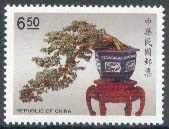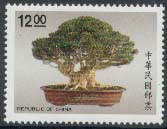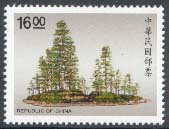
|

|
|
The penjing in the lower left is possibly a double-layered juniper in a light blue low, long tray. At picture's edge is a palm penjing on a raised stand. |
The tree in the lower right looks like a small pine in a round jade-colored pot on a low rectangular table. This is next to a cream-colored stand holding a tall stone on which is growing a brownish-yellow-leafed plant. |









